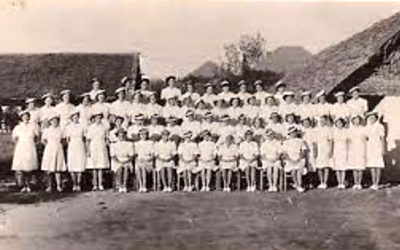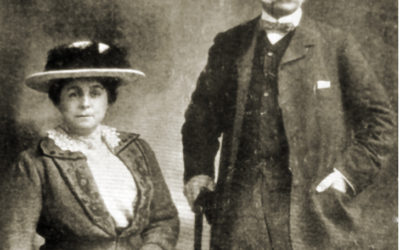More Stories from East Africa's past for you to enjoy
When did Electricity Come to Nairobi?
When did Electricity Come to Nairobi? In order to supply electricity for lighting and power in the district of Nairobi, the Nairobi Electric Power and Lighting Company Limited, with a capital of £30,000, was founded in February 1906. Its originator was Clement HA...
How did Christianity come to Kenya?
How did Christianity come to Kenya? The first Christians to visit East Africa were Vasco da Gama and his crew, including Roman Catholic missionaries, in 1498. He did not, however, leave any of these in East Africa and the next missionary we hear about is...
Odoriferous Mombasa
Odoriferous Mombasa In the first decades of the twentieth century Mombasa was often a far from pleasant place to work or live in. The old town had a graveyard where leg and skull bones stuck out of the thin layer of soil. In the Old Harbour there was a large deep tank...
Hugo van Lawick, Wildlife Photographer
Hugo van Lawick, Wildlife Photographer One of Hugo van Lawick’s wives, Jane Goodall, is perhaps better known to the public than he is. But van Lawick’s work was important in bringing the issue of conservation to the forefront of people’s interest. Hugo was born in...
The Donovan Maule Theatre
The Donovan Maule Theatre Many of you will remember Nairobi’s Donovan Maule Theatre. My abiding memory is of us Kenya High School girls trying to persuade our headmistress, Miss Stott, to let us go to see Lock up Your Daughters there in 1960. She eventually relented....
Herbert Hugh Cowie Comes to British East Africa
Herbert Hugh Cowie On 9 July 1902, at St Mary’s church in Johannesburg, Captain Herbert Hugh Cowie (born in South Africa on 8 September 1870) married Ada Evelyn Harries, the eldest of the nine children of Charles and Olivia Mary Ann Harries. She was born in Maseru,...
More about Thomas Remington
More about Thomas Remington In last month’s blog I wrote about Thomas Remington. One of Remington’s relatives has contacted me and kindly given me more information about this extraordinary man who established postal services in East Africa. The Frenchwoman he married...
How did the Mail get Delivered in East Africa before 1910?
How did the Mail get Delivered in East Africa before 1910? The postal service of East Africa was first begun as a branch of that of Zanzibar, and its first postmaster-general resided in Zanzibar for eight years before coming to British East Africa in 1899. In...
The Rise and Decline of Cotton Growing in Kenya
The Rise and Decline of Cotton Growing in Kenya Some pioneer settlers thought cotton might succeed in East Africa. So the British East Africa Corporation Ltd was established in 1906 with the aim of spreading the work of the British Cotton Growing Association, a body...
Stories of Workers on a White Farm
Stories of Workers on a White Farm Elspeth Huxley recorded some stories of the workers on the farm of her mother, Nellie Grant, which give a fascinating insight into the history of Kenya. The Grants’ first farm was near Thika and then they moved to a farm at Njoro....
How Farm Workers Came to Settler Farms
How Farm Workers Came to Settler Farms We can get an idea of the motivation of African farm workers if we look at some specific cases. Nellie Grant (Elspeth Huxley’s mother) went to Kenya in 1912 and farmed coffee at Thika. After the First World War she heard she had...
The Jewells and Mombasa Hospital
The Jewells and Mombasa Hospital Last month I talked about the Mombasa Hospital. From 1920 onwards Norman Jewell was in charge of the establishment, and his letters and diaries show us what medical hazards were faced by Mombasa’s inhabitants in the 1920s. Jewell had...
Mombasa Hospital’s Early Days
Mombasa Hospital’s Early Days When the Imperial British East Africa Company began to trade in East Africa in the early 1890s, there was a need for a hospital for Europeans, prone to fall sick so easily in a country with an unfamiliar climate, where malaria was...
Where Antelope Roam – A book review
Where Antelope Roam Reviewed by Rachel Woodworth A book review ought to start, more than likely, with the book. But my review can’t begin there. It begins with the man. The man who wrote the book, who gathered days and moments, adventures and seasons, who recalled...
The Wrens in Mombasa in World War II
The Wrens in Mombasa in World War II The Mombasa of today is so different from the Mombasa of the Second World War that it is worth having a look at what the town was like previously. One of the best people to describe it is an officer in the Wrens who was posted to...
Who was Freddy Ward?
Who was Freddy Ward? The name Freddie or Freddy Ward crops up so repeatedly in the early land dealings of East African settlers that it is worth finding out about the man behind the name. Like many of the early white settlers, Hamilton Frederick Ward fought in the...
The Sandbach Bakers and Kenya’s First Dairy
The Sandbach Bakers and Kenya’s first Dairy One of the first white settlers to be given land in Nairobi was Frederick Baker. He was granted 1,600 acres in Muthaiga by John Ainsworth, the Sub-Commissioner, on condition that he supplied Nairobi with dairy products. Who...
Mombasa’s Law Courts
Mombasa’s Law Courts On 30 August 1984 the new Law Courts were opened in Mombasa, but where had justice been dispensed beforehand? A British court, presided over by an English barrister, had been established in a godown near the old harbour in Mombasa in 1890,...
















